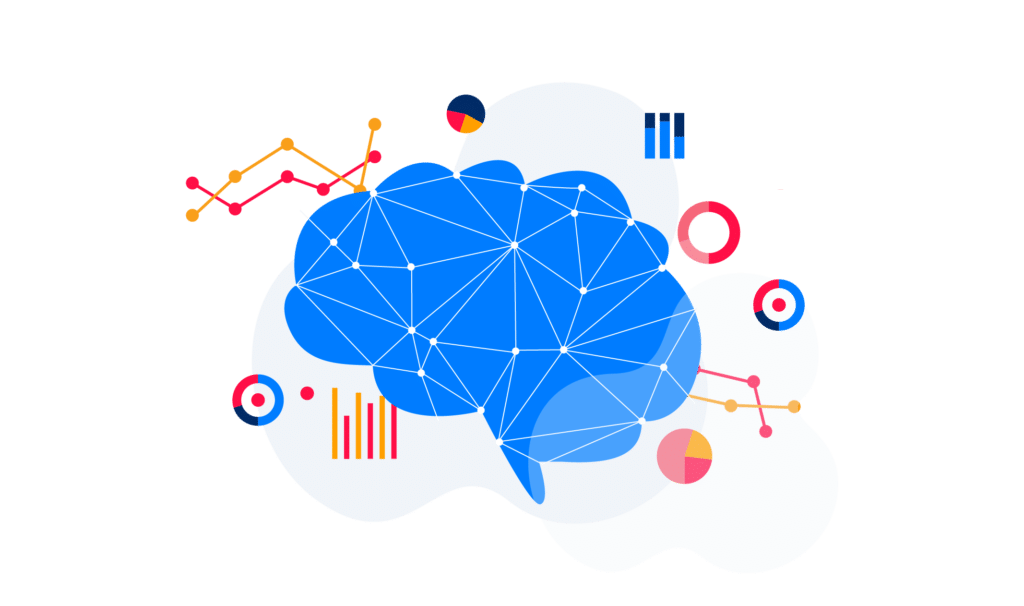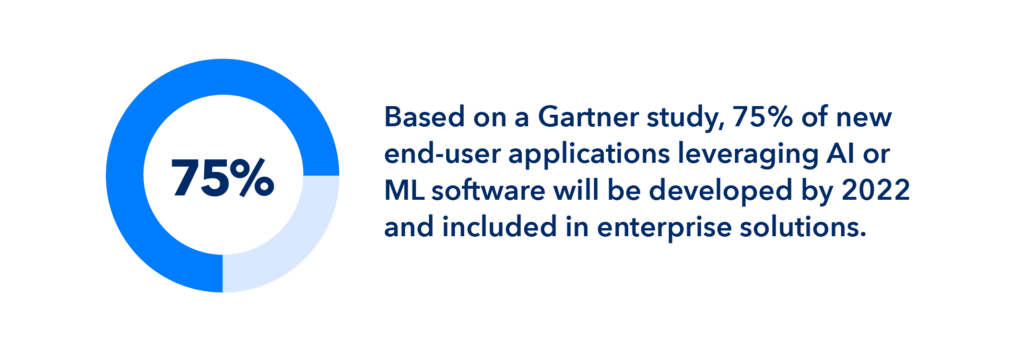Enterprise AI is the ability to incorporate artificial intelligence—technology that integrates the human ability to learn, understand, and interact at a level of sophistication that matches (and inevitably exceeds) our own capabilities—into an enterprise’s data infrastructure.
Enterprise AI is not just a buzzword for press releases and innovation departments. It’s slated to become a crucial resource for the future progress of every department of every industry.
Whereas AI characterizes a scientific field dedicated to improving smart machines, it is still a nebulous term that leaves the door open for opportunistic suppliers, who plug AI into their sales pitch to rebrand their traditional software.
In terms of machine learning, this is a branch of AI which can be used to show machines how to perform a broad number of tasks. Enterprise AI can review vast volumes of data instead of simply relying on instructions fed to it by a software developer.

Essentially, businesses that proceed now and can develop their ability to utilize enterprise AI are setting the support system for their organization of the future. The coming years will be a world in which AI simply improves human capital.
Artificial intelligence has the power to reinvent the entire context of an organization. The constantly-evolving potential of artificial intelligence (AI) is on track to fundamentally change each component of a company.
The right to access information has opened up a unique opportunity for every organization to move forward by leaps and bounds. Some companies will be able to compete as they move forward with their digital transformation, while other businesses will eventually fade.
Innovative organizations are those that go further than just harnessing enterprise AI for a specific operation or use case, but rather place more emphasis on ramping it up to a point of org-wide adoption.
Entities throughout various business sectors are experiencing a drastic and long-term change towards the perfect equilibrium of AI implementation.
Although access to innovation, information, and knowledge is prevalent today for any enterprise business, what is rare is how and for what purpose each company uses that data. Even as AI has afforded companies throughout varying industry sectors and countries a similar reference point to utilize AI software, the variables that characterize their progress must be recognized.

Today, there are many prominent use cases of companies leveraging machine learning. For example, Google implemented DeepMind’s energy-reducing technology to decrease the data center cooling bill by about 40%, and Amazon utilizes image recognition to understand what shoppers purchase.
Further, there are the somewhat mundane applications of machine learning that have been deployed for years, such as the suggestion tools used by Amazon to encourage you to purchase more goods, or by streaming entertainment services to get you to watch additional TV programs. This is also the same technology that cybersecurity systems employ to detect network threats as they arise. Just within the past five years, capital investment companies have also begun to use machine learning to pinpoint unauthorized transactions and inconsistencies with billing.
Additional instances include using machine learning (ML) for natural language processing with chatbots or other interactive communication mechanisms in customer service facilities, or quickly detecting spam in email inboxes.
Based on a Gartner study, 75% of new end-user applications leveraging AI or ML software will be developed by 2022 and included in enterprise solutions.
The effect of the emerging automation environment, powered by artificial intelligence, is increasingly recognized by organizations. Consequently, it is essential to comprehend what types of implications will result from further development in, and implementation of AI.









































